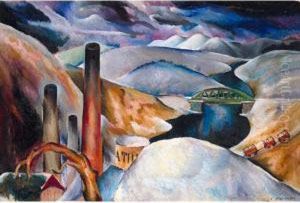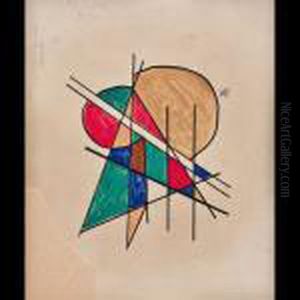Petr Ivanovich Sokolov Paintings
Petr Ivanovich Sokolov was a notable Russian watercolor portraitist and graphic artist of the late 18th and early 19th centuries. Born on July 15, 1791, in St. Petersburg, Russia, he belonged to the era of Romanticism and was part of the Russian artistic scene that bridged the gap between neoclassical traditions and the burgeoning romantic sentiment of his time.
Sokolov was educated at the Imperial Academy of Arts in St. Petersburg, where he honed his skills as a draftsman and painter. He did not complete his studies at the Academy but left in 1809 to pursue a career as a freelance artist. His work primarily consisted of portraits, which he executed with a delicate and sensitive touch, capturing the likeness and character of his subjects. These included members of the Russian nobility and bourgeoisie, as well as literary and public figures. Sokolov was particularly adept at using watercolor, a medium that allowed him to achieve depth and subtlety in his portraits. He also worked in ink, pencil, and gouache.
Throughout his career, Sokolov's style evolved, reflecting the influence of various European art movements. His early works exhibit the clear influence of neoclassicism, with its emphasis on line and form. However, as romanticism took hold, his style became more expressive, with a greater focus on mood and atmosphere. Despite the changes in his approach, Sokolov consistently demonstrated a keen eye for detail and a strong ability to depict his subjects with psychological insight.
Sokolov was also known for his genre scenes and illustrations. He created a number of vignettes depicting everyday life in Russia, which were popular among his contemporaries for their charm and vivacity. His illustrations for literary works, including those for the poems of the famous Russian poet Alexander Pushkin, are among his most treasured contributions to Russian art.
Petr Ivanovich Sokolov's legacy is that of a master portraitist and an important figure in the development of Russian watercolor painting. His works are preserved in various museum collections, including the Tretyakov Gallery and the Russian Museum. His ability to capture the essence of his time and the personalities of his subjects has left an indelible mark on the history of Russian art. Sokolov died on November 6, 1848, in St. Petersburg, leaving behind a rich body of work that continues to be studied and admired.


